On View
‘I Wanted to Leave Something in Return’: Artist Claudia Comte on Why She Installed Permanent Underwater Sculptures Off Jamaica’s Coast
The cast concrete sculptures will help with the revitalization of the coral reef.
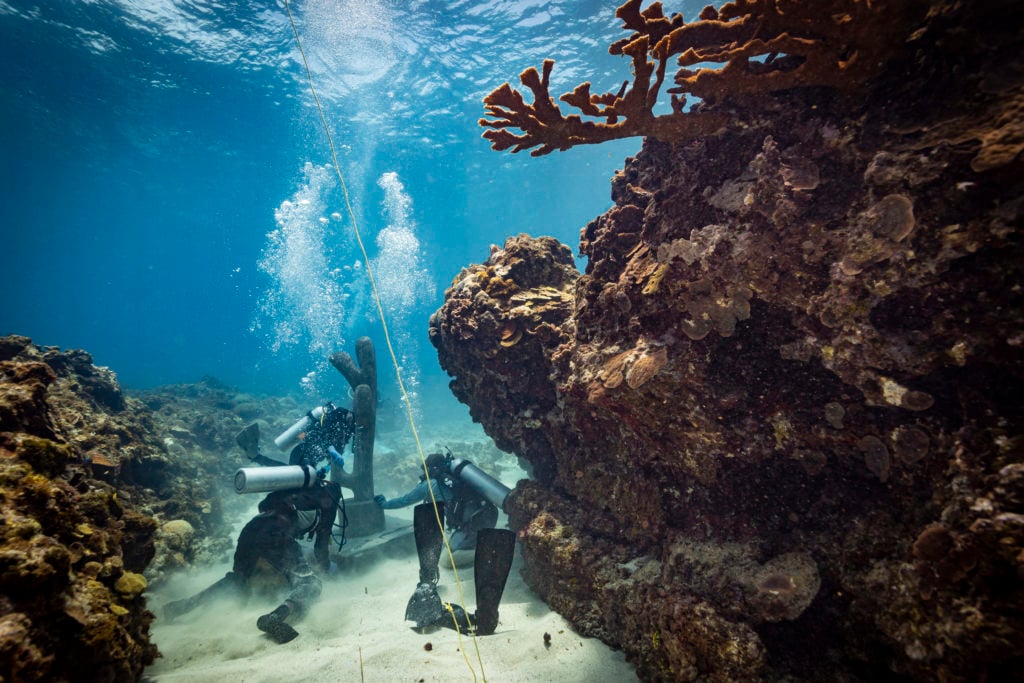
The cast concrete sculptures will help with the revitalization of the coral reef.

Sarah Cascone

Snorkelers exploring the shores of Jamaica’s East Portland Fish Sanctuary may encounter something unexpected amid the colorful tropical fish: concrete sculptures by a sought-after emerging artist.
Claudia Comte spent six weeks creating the saguaro cactus sculptures, which she installed underwater in July with the help of TBA21–Academy, collector and philanthropist Francesca Thyssen-Bornemisza’s interdisciplinary art and science organization. In addition to delighting swimmers and snorkelers, the artworks have an even grander purpose: to protect marine life and ultimately help revive the local coral reef.
Cacti, a recurring form in the artist’s work, “represent the arid terrain of the desert and symbolize for me a potential future version of the earth on land and sea,” Comte told artnet News. “Placing cacti on the seabed creates quite a rupture, while also conjuring quite an emotional reaction.” Through the magic of art, a prickly plant known for surviving harsh, dry conditions has suddenly adapted to life underwater.
Comte created “The Cacti Series” as part of her TBA21–Academy residency at Alligator Head Foundation in Portland, Jamaica, the academy’s conservation science partner. The artworks have been installed in a protected area of the foundation’s East Portland Fish Sanctuary, which has seen a 16 percent increase in species diversity since its founding three years ago.
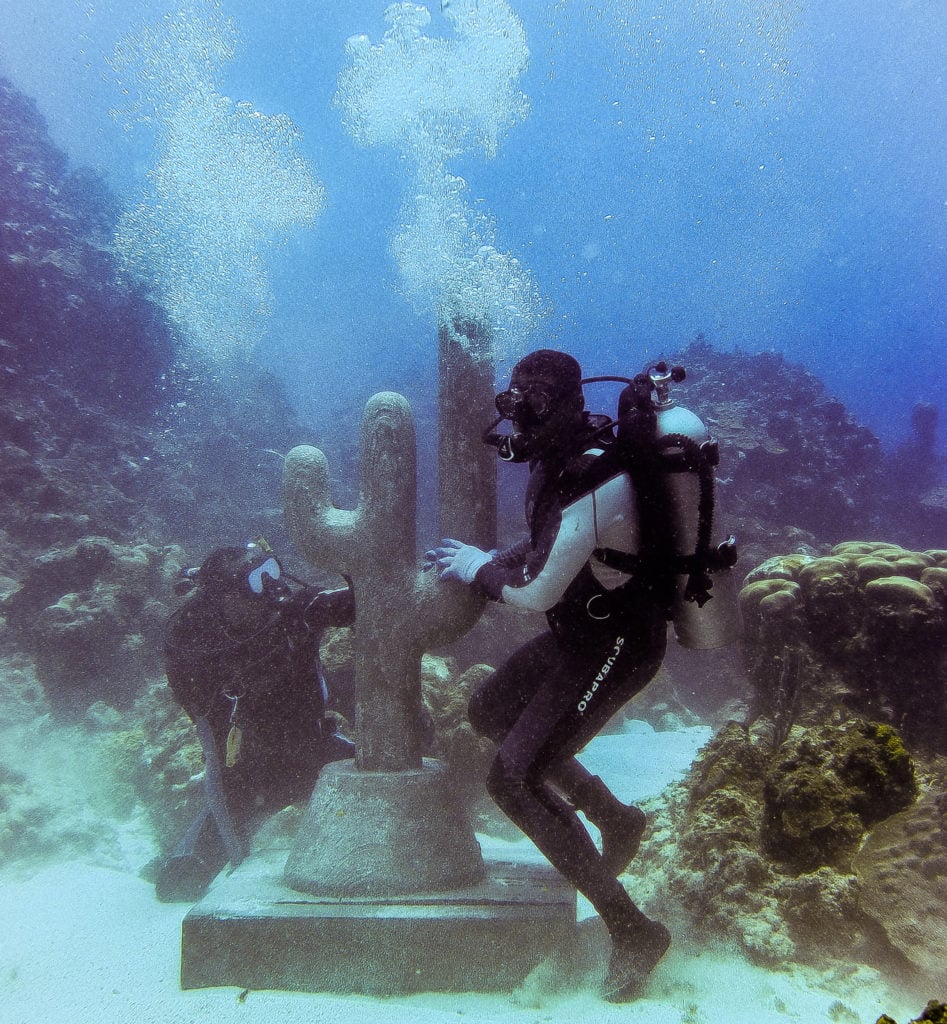
Divers with Claudia Comte’s underwater cactus sculptures at Jamaica’s East Portland Fish Sanctuary (2019). Photo by Francesca Thyssen-Bornemisza.
The Comte collaboration marked the first time the academy had done an aquatic art installation. “Always thoughtful about environmentally sound practices, we had been quite skeptical towards this kind of installation in the past,” director Markus Reymann admitted to artnet News.
It wasn’t originally Comte’s plan, either. When she first began the residency, the artist—known for her elegant wooden sculptures—had planned to experiment on dry land with ecologically sourced wood endemic to Jamaica. But she decided to create the underwater works as a way of giving back. In January, the marine sanctuary will overlay baby coral from its nursery on the cactus sculptures, promoting new growth.
“I felt that as I would be taking this tropical wood out of the country I wanted to leave something in return,” Comte said. “It’s important to me that they serve a purpose, that they are not only sculptures on the seafloor.”
Reymann notes that the reef regeneration has an added benefit, too: As more divers become attracted to this area of Jamaica, their presence will be a boon to local businesses. “If Claudia’s work helps to create a destination which subsequently provides an economic boost to the local community, then I would be very, very happy,” he said. (The permanent underwater exhibition, about 33 feet below sea level, is accessible by diving and snorkeling.)
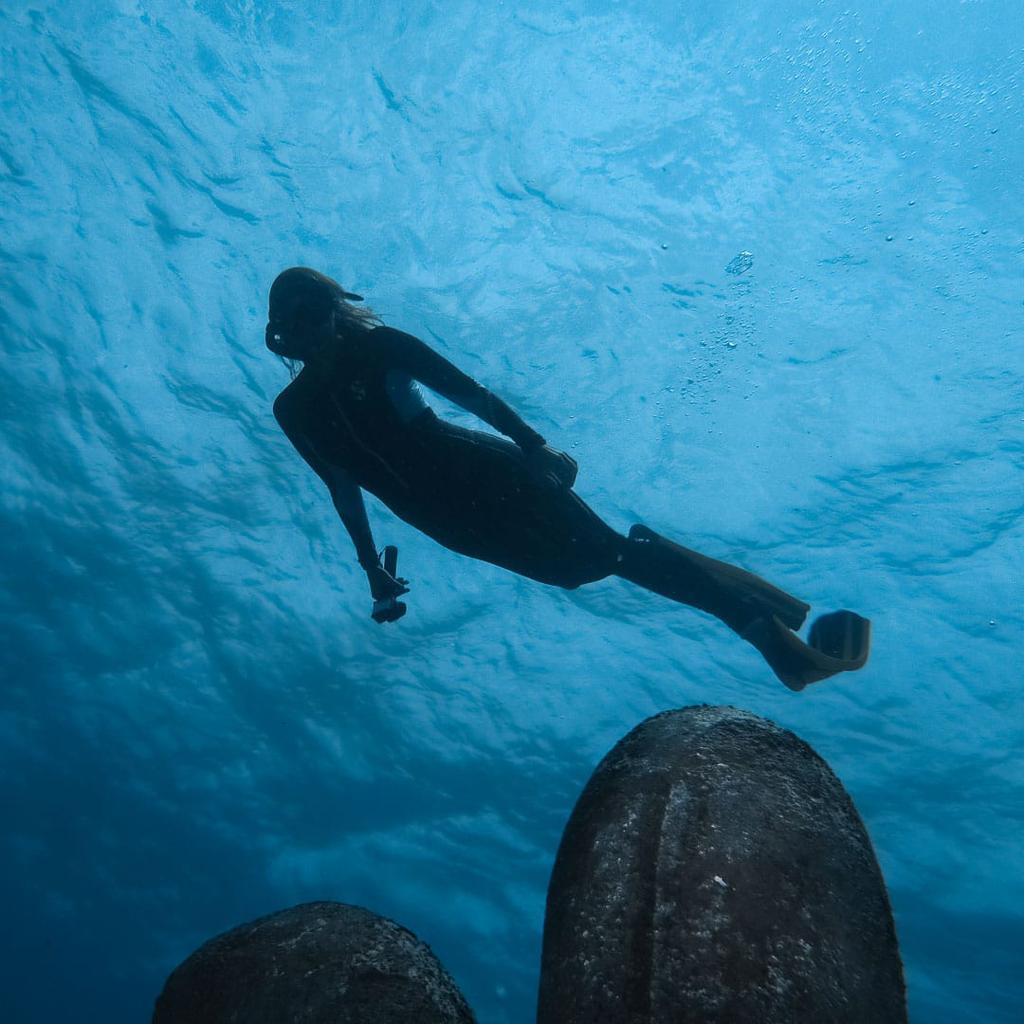
Claudia Comte installing her underwater cactus sculptures at Jamaica’s East Portland Fish Sanctuary as part of her TBA21–Academy residency at the Alligator Head Foundation in Portland, Jamaica (2019). Photo by Francesca Thyssen-Bornemisza
To create the submerged sculptures, Comte worked with a wide variety of experts. Nathaniel Petre, the academy’s first technology resident, offered advice on how to construct a sculpture that could withstand ocean currents. Officials at the Oracabessa Special Fisheries Conservation Area advised using reinforced concrete, on which coral is known to grow well.
An experienced scuba diver, Comte was on hand in the water as her works were being lowered into the sea, which she described as an “incredible experience.” She knew enough about diving to recognize how impressive it was that the technical divers were able to smoothly position the heavy sculptures into place. “As a diver, you are told to always remain as relaxed as possible and to not exert too much energy, so it was really something to see what can be done all while underwater and masked,” she said.
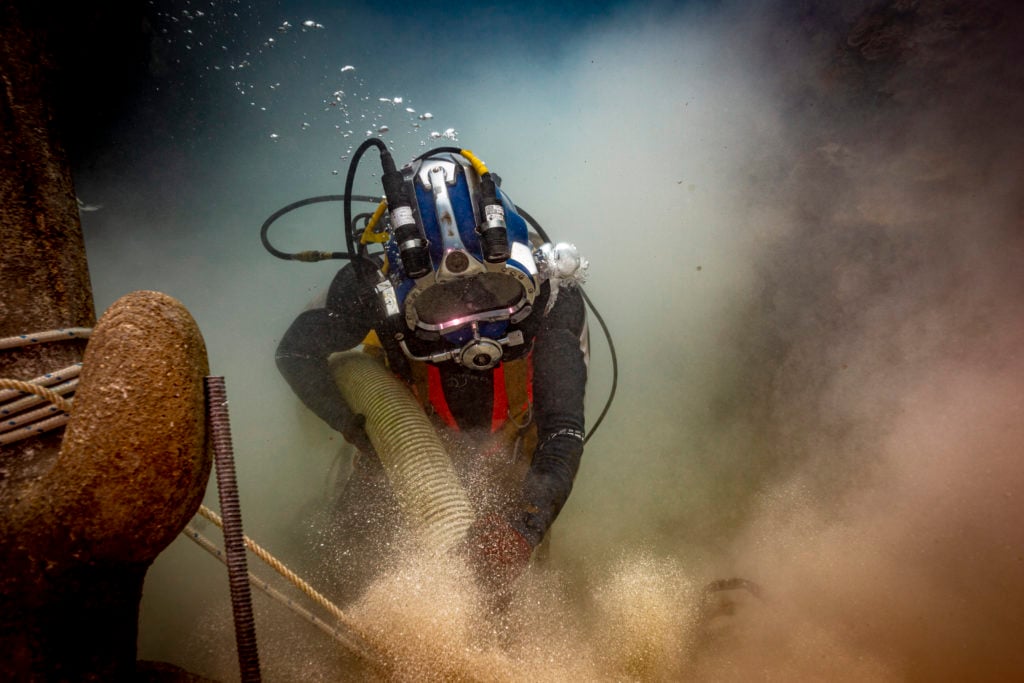
Divers installing Claudia Comte’s underwater cactus sculptures at Jamaica’s East Portland Fish Sanctuary (2019). Photo by F-Stop Movies.
Although there were new challenges, Comte’s creative process remained largely the same. She based the underwater cacti on wooden sculptures she had previously carved with a chainsaw and finished to a smooth surface with emery paper. As with her other works in marble, bronze, and ceramic, Comte then 3-D scanned the pieces for reproduction.
“Using high-tech methods like 3-D scanning and milling robots is a major part of my creative and conceptual process,” she explained, allowing her to question the associations we have with “high” and “low” materials.
While Comte was creating the cactus sculptures, she was also continuing her work with fallen trees in Jamaica, carving wooden sculptures from 40 Jamacian tree trunks.
The works, commissioned by the Thyssen-Bornemisza Art Contemporary Foundation and created during the residency, are inspired by the shapes of sea sponges, coral, and other creatures living in the Jamaican reef-dwelling organisms. An exhibition of this work, curated by Chus Martínez, is planned for 2020 at the Museo Nacional Thyssen-Bornemisza in Madrid.
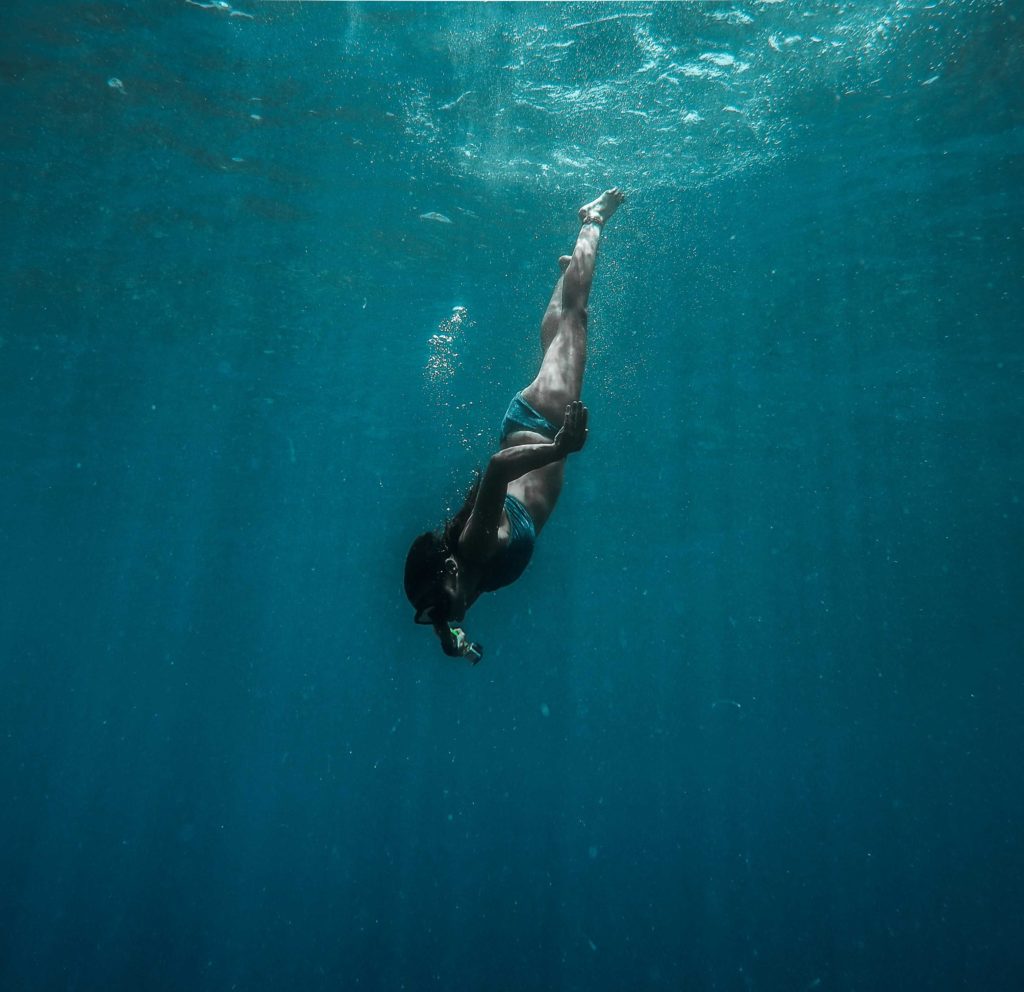
Claudia Comte installing her underwater cactus sculptures at Jamaica’s East Portland Fish Sanctuary as part of her TBA21–Academy residency at the Alligator Head Foundation in Portland, Jamaica (2019). Photo by F-Stop Movies.
Prior to her Alligator Head residency, Comte took part in a TBA 21–Academy expedition to New Zealand in summer 2018 led by Martínez. The artist also premiered her performance The Day That Wood and Matter Wanted to Become Salt Water at the academy’s Venice headquarters, Ocean Space, in September 2018.
The hope is that collectively, this programming will inspire people to learn more about conservation and the importance of working to combat climate change, particularly with regard to our oceans. “Most people,” said Comte, “don’t understand what’s happening underwater. It can seem like one giant mysterious alien world to us.”